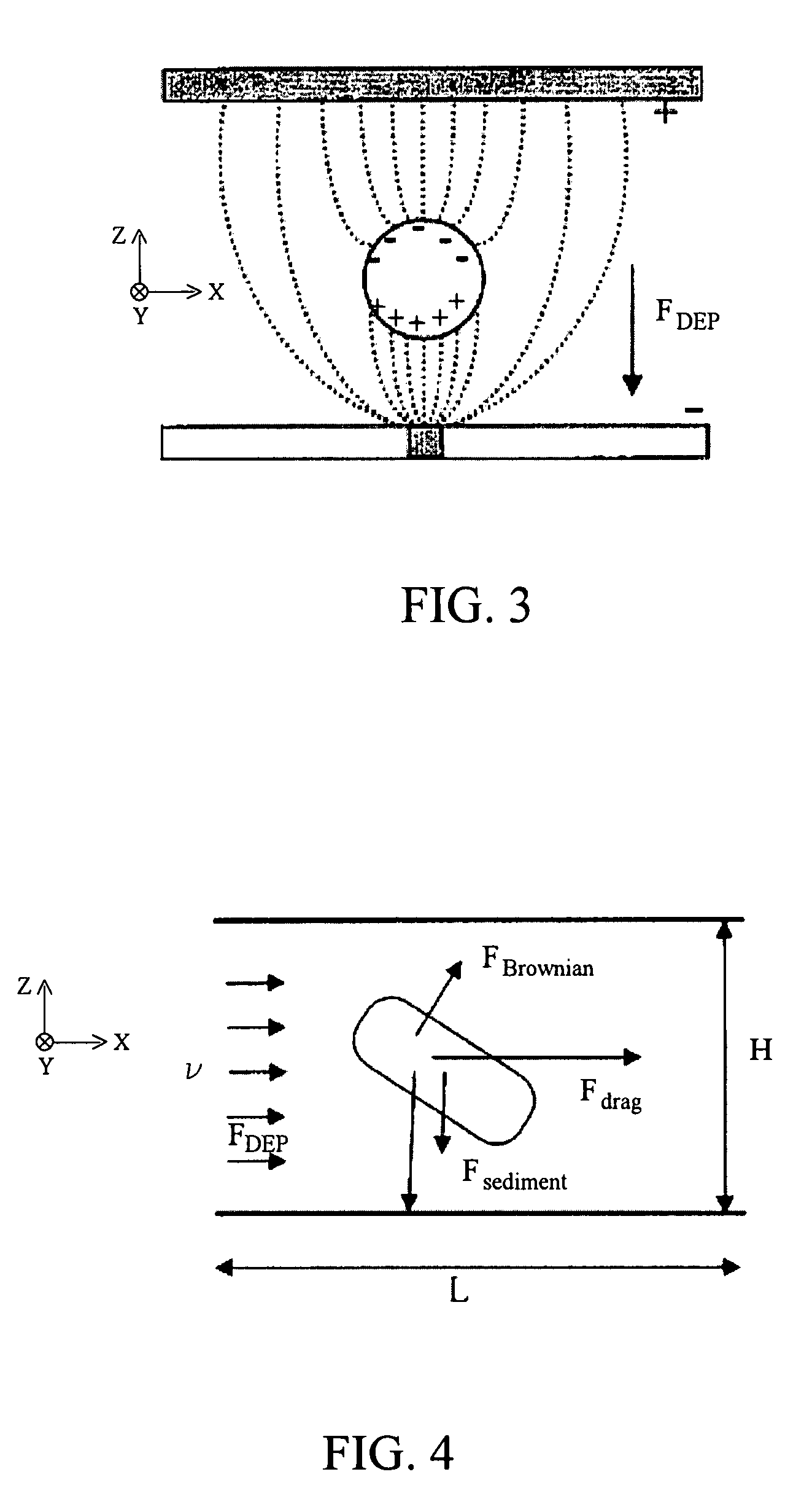Dielectrophoresis-based particle sensor using nanoelectrode arrays
a nanoelectrode array and particle sensor technology, applied in the direction of liquid/fluent solid measurement, fluid pressure measurement, peptides, etc., can solve the problems of high cost, slow operation speed, and need for skilled personnel, and achieve the effect of facilitating on-chip sample preparation
- Summary
- Abstract
- Description
- Claims
- Application Information
AI Technical Summary
Benefits of technology
Problems solved by technology
Method used
Image
Examples
Embodiment Construction
[0016]FIG. 1 schematically illustrates an embodiment 1 of the invention, which includes a substrate 12, a thin insulating first layer 13 (e.g., SiO2, Si3N4, or other) contiguous to a surface of the substrate 12, and an array of spaced apart (first) electrodes 14-i (i=1, . . . , I; I≧1), with each electrode 14-i having an a sub-array of at least first and second spaced apart nanostructure (“NS”) electrodes 14-(i,j) (j=1, . . . , J; J≧2). Optionally, interstitial regions between adjacent NSs 14-(i,j) on the same electrode and / or between adjacent electrodes 14-i are partly or wholly filled with an insulating material 15 (e.g., SiO2, Si3N4, epoxy or other), and the insulating material 15 is planarized by mechanical polishing, chemical etching, chemical mechanical polishing, or plasma etching so that tips of the NSs are exposed, collectively forming an exposed surface 14ES of the electrodes 14-i. The NSs 14-(i,j) may be multi-wall carbon nanotubes (“MWCNTs”) or carbon nanofibers (“CNFs”)...
PUM
| Property | Measurement | Unit |
|---|---|---|
| Thickness | aaaaa | aaaaa |
| Distance | aaaaa | aaaaa |
| Angular frequency | aaaaa | aaaaa |
Abstract
Description
Claims
Application Information
 Login to View More
Login to View More - R&D
- Intellectual Property
- Life Sciences
- Materials
- Tech Scout
- Unparalleled Data Quality
- Higher Quality Content
- 60% Fewer Hallucinations
Browse by: Latest US Patents, China's latest patents, Technical Efficacy Thesaurus, Application Domain, Technology Topic, Popular Technical Reports.
© 2025 PatSnap. All rights reserved.Legal|Privacy policy|Modern Slavery Act Transparency Statement|Sitemap|About US| Contact US: help@patsnap.com



